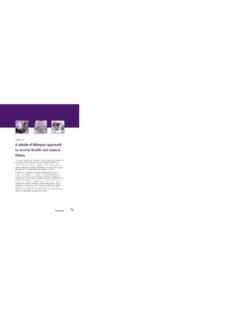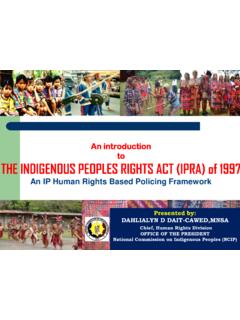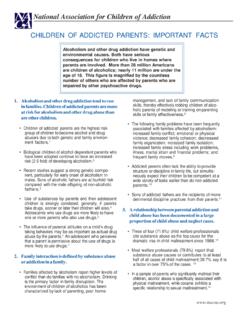Transcription of ANGER-AGGRESSION-VIOLENCE ASSESSMENT (AAVA)
1 ANGER-AGGRESSION-VIOLENCE ASSESSMENT ( aava ) Training Manual Behavior Data Systems, Ltd. Box 44256 Phoenix, Arizona 85064-4256 .. Telephone: (800) 231-2401 Fax: (602) 266-8227 E-mail: Website: Copyright Protected. ALL RIGHTS RESERVED. PRODUCT DESCRIPTION The ANGER-AGGRESSION-VIOLENCE ASSESSMENT ( aava ) is an evidence based self-report ASSESSMENT instrument or test that focuses on anger, aggression and violence , which are characterized as being on an emotional continuum. More specifically, continuum theory postulates shades (or intensities) of Anger- aggression and violence exist as points on a continuum of emotional reactivity.
2 This continuum theory is based on the theorem that as anger increases, it can evolve into aggression , which in turn can intensify and evolve into violence . An emotionally reactive continuum Obviously, the emotionally reactive continuum theory as stated here is an over-simplification nevertheless it does help conceptualize the ANGER-AGGRESSION-VIOLENCE ASSESSMENT ( aava ) tests purpose and use. The aava is designed for both clinical practice (patients) and criminal justice (offenders) risk ASSESSMENT . Furthermore, probation and parole departments have welcomed the use of risk assessments The ANGER-AGGRESSION-VIOLENCE ASSESSMENT ( aava ) instrument or test has seven domains (scales) which include: aava Domain (Scales) Truthfulness scale Anger Scale aggression Scale Stress Management Scale Alcohol Scale Drug Scale violence Scale Triad Scale: ANGER-AGGRESSION-VIOLENCE Anger aggression violence i ANGER-AGGRESSION-VIOLENCE ASSESSMENT Training Manual Table of Contents ANGER-AGGRESSION-VIOLENCE ASSESSMENT TABLE OF CONTENTS Production i Risk Level Classification.
3 Anger Scale .. aggression Scale .. violence Scale .. Truthfulness Scale .. Truth-Corrected Scores .. Alcohol Scale .. Drug Scale .. Stress Management Scale .. Oral Instructions .. Present, Past and Future Tense .. Staff Member Should Not Take the ANGER-AGGRESSION-VIOLENCE ASSESSMENT .. Control of ANGER-AGGRESSION-VIOLENCE ASSESSMENT Reports .. Check Answer Sheets for Completeness .. Retest .. Delete Client Names (Protects client confidentiality) .. Test Data Input Verification (Insures accurate test data scoring) .. ANGER-AGGRESSION-VIOLENCE ASSESSMENT Administrative Modes .. Human Voice Audio .. Expanding Database .. Significant Items .. Instructions.
4 ANGER-AGGRESSION-VIOLENCE ASSESSMENT Training Manual Copyright Protected. ALL RIGHTS RESERVED. 1 RISK LEVEL CLASSIFICATION Each ANGER-AGGRESSION-VIOLENCE ASSESSMENT scale score is classified in terms of the risk it represents. These risk level classifications are individually calculated for each of the seven empirically based scales each time an ANGER-AGGRESSION-VIOLENCE ASSESSMENT is scored. RISK LEVEL CLASSIFICATION RISK RANGE Low Risk Medium Risk Problem Risk Severe Risk A problem is not identified until a scale score is at (or above) the problem risk range. Scores in the Problem Risk range represent problems for which specific intervention and/or treatment recommendations (or referrals) are made.
5 Extreme or severe problems are identified with scale scores in the Severe Risk range. Recommendations are intensified for severe problem scale scores. ANGER Anger is a normal emotion that everybody experiences. Sometimes anger can enhance a person s well-being and functioning. However, anger can become overwhelming or uncontrollable and lead to aggressive and violent behavior. Anger has been defined as a person's response to perceived threats against an individual or group (Lazarus, 1991). Anger can also evolve from hostility (Spielbeger, et al., 1985) or cynicism (Martin Watson & Wan, 2000). Intense or uncontrolled anger (rage) can affect one s relationships, jobs and daily life.
6 Because anger varies from person to person, and the situation they are in at any given time, it is difficult to describe a typical angry response (Avenill, 1983). Consequently, theoreticians have published contradictory lists of different types of anger. When experiencing extreme anger ( , rage) the loss of rationality often results in violence and legal issues. Anger management is frequently recommended for people who engage in angry, aggressive and even violent behavior. A high anger range Triad Scale score identifies anger management candidates. The purpose of anger management is to teach the basics (techniques and strategies) necessary to express one s emotions in safe, healthy and satisfying ways.
7 Most anger-management programs increase participant s anger awareness, along with anger management (relaxation, desensitization, cognitive awareness, assertive training, etc.); acceptance of change (reframing, cognitive restructuring, forgiveness, etc.); and learn relapse prevention skills. In today s society anger and aggression are increasingly important areas of concern. They are reflected in threats of violence , relationship issues, social problems and arguments or fights. Exposure to violent media (movies, television, video games, etc.) has been associated with increased aggression (Anderson, et al.)
8 , 2003). Media violence affects a person s physical, emotional and verbal behavior. ANGER-AGGRESSION-VIOLENCE ASSESSMENT Training Manual Copyright Protected. ALL RIGHTS RESERVED. 2 aggression aggression has been divided into various categories, which has fostered considerable disagreement. There are now numerous types of aggression depending upon the aggressor s intentions and the situation that caused the aggressive act. These categories, or dichotomous aggressions are allegedly classifications of aggression that are based upon the intentions of the aggressor and the situation that elicited the aggression .
9 Traditional discussions of aggression describe a series of dichotomous distinctions between types of aggression . Several aggression dichotomies are set forth below: violence has been described as aggression in its most extreme form. In other words, violence has been characterized as extreme aggression with the intent to injure or harm others. Some theorists argue that aggression is the result of extreme anger. Proactive aggression refers to people who use aggression to attain a goal. For example, if a person wants something they simply take it. Some people use proactive aggression to obtain social goals (Dodge, 1991).
10 Other proactive and reactive aggression differences include social cognitive correlations (Hubbard, Dodge, Cilley, Coie and Schwartz, 2006). Reactive aggression is based upon anger. The primary goal is to harm someone. Reactive aggression is characterized by intense anger and it is emotionally driven. Reactive aggression is associated with interpersonal aggression , whereas proactive aggression is not (Dodge, Lockman, Harnish, Bates & Pettit, 1977). Reactive aggression is a reaction to provocation and is accompanied by anger (Pulickmen, 1996). Affective aggression is also known as hostile or emotional aggression . It is usually impulsive and driven by anger.




